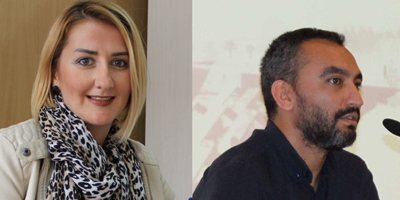Head of EUL Interior Architecture Department Ermiyagil; The COVID-19 outbreak has led users to a new understanding of space and search

European University of Lefke (EUL) Head of Interior Architecture Department M. Selen Abbasoğlu Ermiyagil and Architecture Master’s Student Eren Tümer contributed to the “Life and Space 2021 1st International Pandemic Paradoxes Congress” organized by the Near East University Interior Architecture Department with their joint work.
Ermiyagil and Tümer at the congress with their presentation titled, “COVID-19 Pandemic and Metamorphosis of Architectural Spaces: Will digital platforms be new workspaces?”, they presented their work on hybrid working environments that have transformed from office spaces to digital spaces related to the new normal.
“The COVID-19 pandemic has caused technology to integrate into our business and social lives at an unpredictable speed”
Providing information about the study, Ermiyagil continued her words by saying, “The COVID-19 pandemic, which unexpectedly appeared as a global problem, caused technology to be integrated into our business and social lives at an unpredictable speed.” These new changes in our lives, worldwide quarantines or restrictions on various standards have brought along different digital solutions to meet the education, work and socialization needs of communities affected by the epidemic. Accordingly, a new concept of space began to emerge. The extent to which the perception of space usage of interior, exterior and public spaces has changed with the pandemic has begun to be discussed with studies conducted in different disciplines.
Stating that the physical and spiritual needs of the users have changed, Ermiyagil stated that the spaces also continue to change, and in this context, there have been and continue to be experienced changes arising from the difficulties and needs in the living spaces. Stating that these experiences lead users to a new understanding of space, Ermiyagil said, “With the change in this spatial perception during the pandemic period, the design problem is to create a new way for new ideas that can be produced in space design by strengthening social perception and awareness. In this way, architectural spaces where functions such as education, meeting, working and exchange of ideas have begun to transform into relatively endless but limited digital spaces at the same time.”
“Hybrid spaces, our new understanding of space, will take place in our lives to be less affected by pandemics”
From this point of view, Ermiyagil stated that the main purpose of this study is to examine the reflections of the work action, which is rapidly digitalizing with the COVID-19 epidemic, on the architectural spaces and work action within the framework of the offices, and in this context, as a result of the users’ opinions, observations and analysis of the data, the office spaces are protected from the COVID-19 epidemic. When evaluated in terms of efficiency, he stated that the positive and negative aspects experienced by users from different professions in the transformation of space are taken into consideration. “When the users are evaluated at the point of transition from physical space to digital space, and their reflections on the final products are evaluated, it is clearly understood that they have the potential to change in the future. In this context, it is the most important data obtained that hybrid spaces and a hybrid working method are waiting for us in the future, where a new understanding of space will emerge,” said Ermiyagil, continuing his words, “From this point, in order to be less affected by the pandemics that may occur in the next years in our lives, a new space will be created. Hybrid spaces, which is our understanding, will take place in our lives and in this way, the positive aspects of physical and digital spaces will be benefited.”
